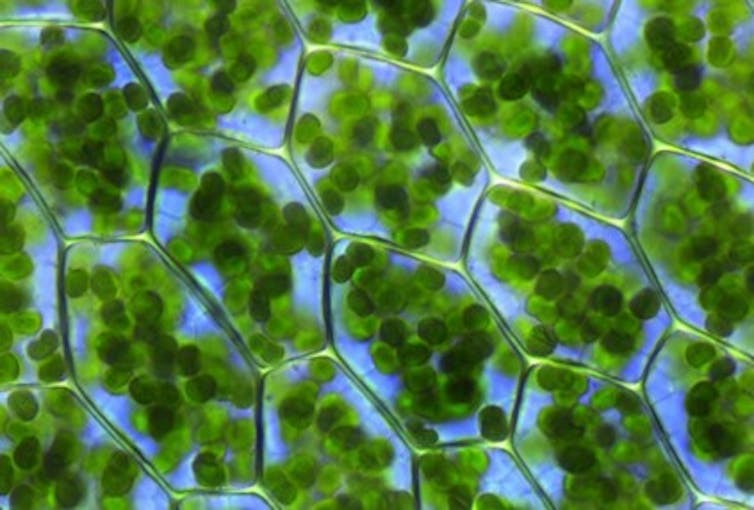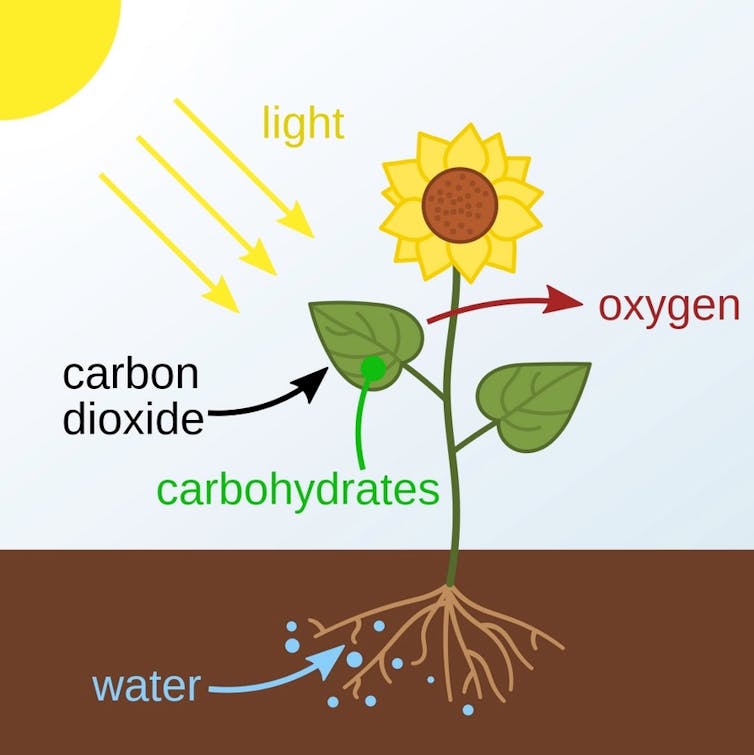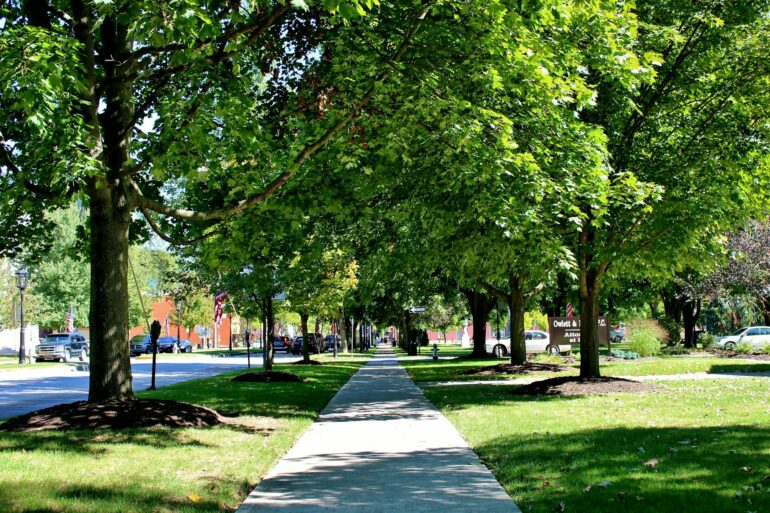
Curious Kids is a series for children of all ages. If you have a question you’d like an expert to answer, send it to [email protected].
Why do trees need sunlight? – Tillman, age 9, Asheville, North Carolina
Trees need sunlight for the same reason you need food. The energy from the Sun’s rays is a crucial ingredient in how plants make their own food that helps them power all their cells. Since trees don’t harvest or hunt food, they have to produce their own. The way they make their food is a unique and important chemical process called photosynthesis.

Chlorophyll is what makes leaves green.
Kristian Peters-Fabelfroh/Wikimedia, CC BY-SA
What is photosynthesis?
The cells in plants and all other living things have microscopic components called organelles. One type of organelle in plant cells is the chloroplast, and it contains the pigment chlorophyll, which is what makes leaves green. When chlorophyll receives sunlight, it starts the photosynthesis reaction.
The name photosynthesis comes from the ancient Greek words “photo,” which means light, and “synthesis,” which means to make. During this food-making process, plants take carbon dioxide from the air and water from the ground, and with the energy from sunlight, make glucose. Glucose is a very simple type of sugar. Because it is a simple compound, it is simple to make.
Most of the time, photosynthesis occurs in leaves, and leaves take in sunlight to make food. There are some special plants, though, that actually absorb sunlight on their stems. Some of these include cactuses like the balloon-shaped golden barrel cactus, the spiky Munz’s Cholla and the paddle-shaped prickly pear. Some plants even have roots that can photosynthesize, like the rare palm Cryosophila albida.

Sunlight gives plants the energy to turn water and carbon dioxide into carbohydrates – the food their cells need to live and grow.
At09kg/Wikimedia, CC BY-SA
Photosynthesis is billions of years old
Photosynthesis evolved more than 3.5 billion years ago. Initially, only single-celled organisms, kind of like today’s algae, could make sugar this way. Oxygen is a waste product from the photosynthesis process, and over time, these single-celled organisms released enough oxygen to change the Earth’s atmosphere. Ultimately, we and all other animals needed this to happen to be able to live and breathe.
Over time, aquatic plants developed, and gradually plants moved to land around 500 million years ago to better access their most vital resource: sunlight. Plants eventually got taller by around 350 million years ago. This is when the first tree evolved, which grew up to 150 feet tall. These trees looked like the evergreen trees we see today – sort of like pines, firs and spruce. And about 125 million years ago, trees that looked like the maples, oaks and beech…



